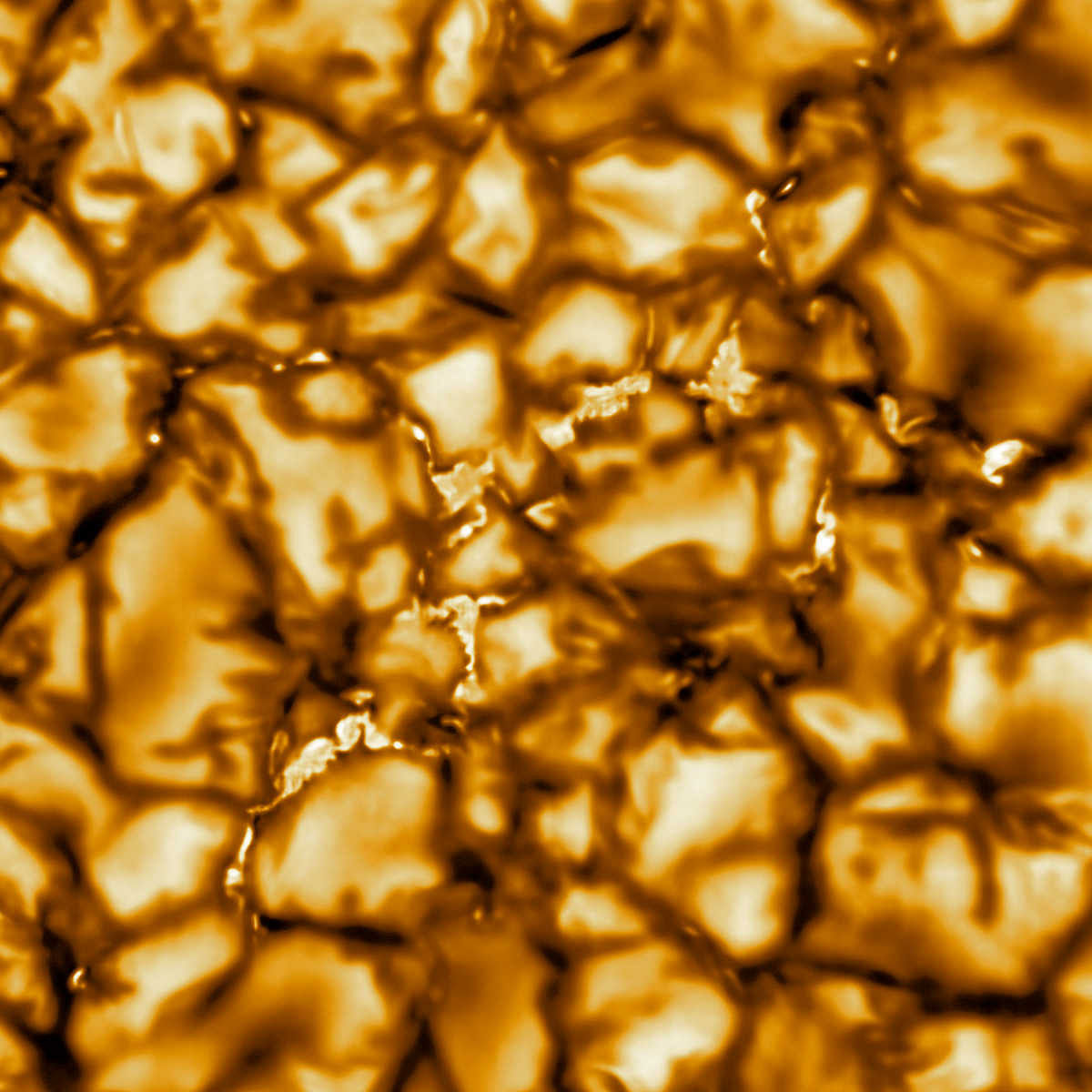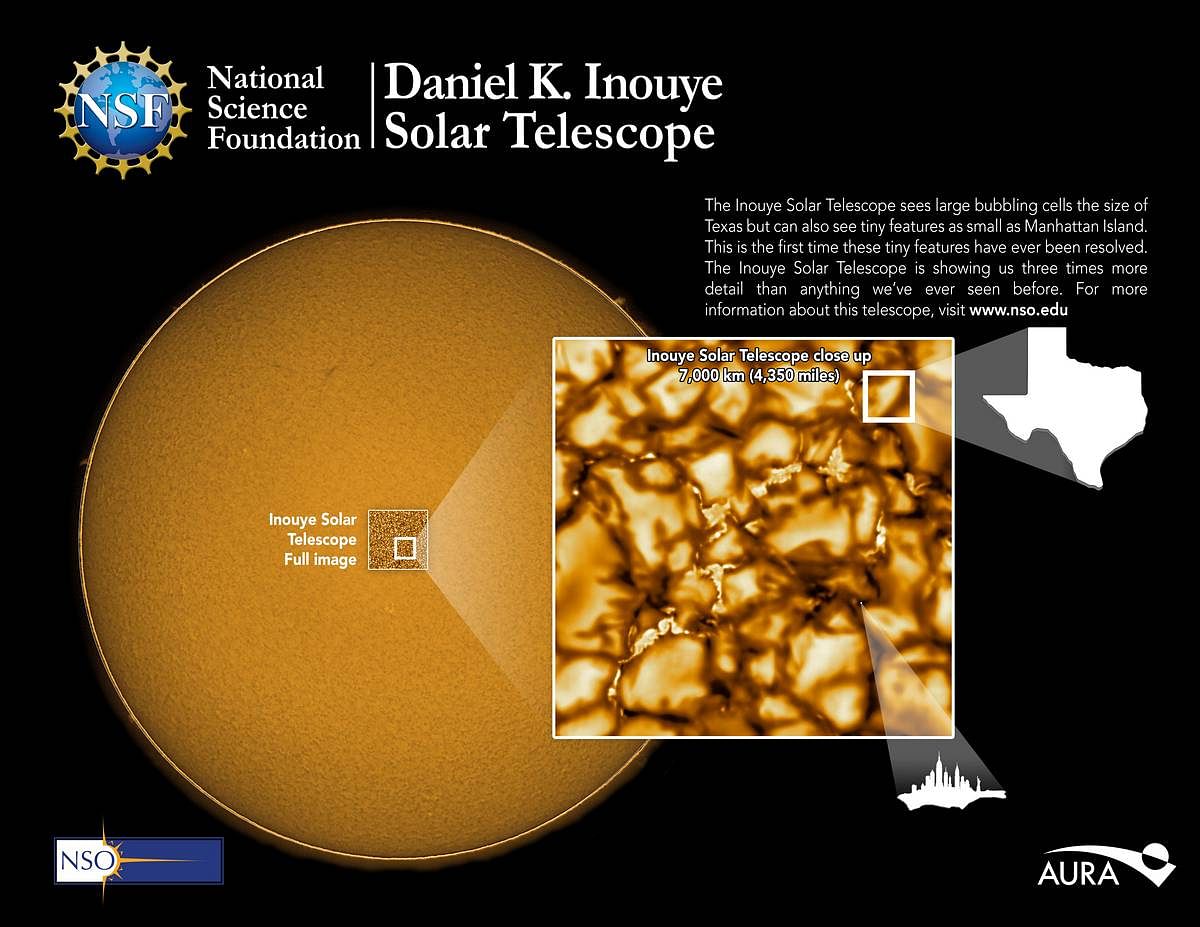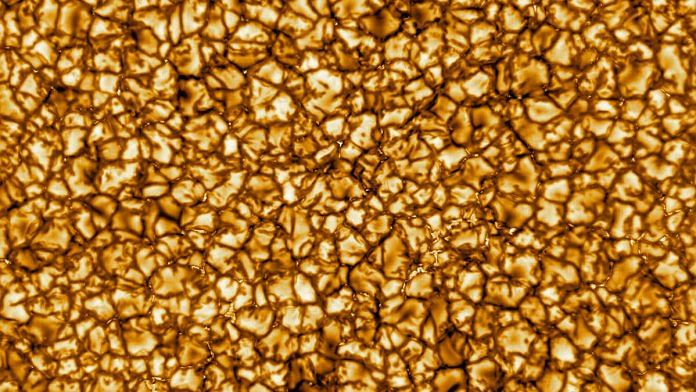Bengaluru: Astronomers have released the highest-resolution images of the Sun, captured by the National Science Foundation’s Daniel K. Inouye Solar Telescope located in Maui, Hawaii.
The images show never-seen-before features of the Sun, including a desert-like surface divided into discrete gigantic cells, and a layer of boiling gas or plasma covering the whole surface.
The images reveal that the cells on the surface help create convection, where the heat from inside the Sun is transferred to the outer layers and rises as plasma from the centre of these Texas-sized cells, while the cells themselves also cool in the process and sink beneath the hotter material. The heat is then transferred out into the solar system.
The outer atmosphere of the Sun, called the corona, is much hotter than its actual surface. The corona measures typically 1 million degrees Kelvin (or 1000000 degrees C), while the surface is only 6000 K (or about 5500 degrees C). Highly energetic charged particles shoot out from the Sun and form the solar wind, which blows through the solar system and creates aurorae when it comes in contact with atmosphere.

Also read: NASA mission reveals Sun’s mysteries, could help better predict space weather around Earth
Most powerful telescope to study Sun
Detailed images like these are considered key to understanding solar wind, which also plays a major role in space weather. Magnetic storms created by processes of heat and energy transfer on the Sun can affect satellites, power systems, communications, and air travel on Earth, as well as astronauts at the International Space Station.
However, space weather is hard to predict as scientists do not yet fully understand the processes on the Sun’s surface and don’t have the technology to observe in great detail. These first images are the first step towards understanding and predicting space weather in a more efficient manner.
The Daniel K. Inouye telescope is a 4-metre, ground-based solar telescope and is the largest solar telescope in the world. It has a 13-foot-long mirror and can observe structures on the Sun’s surface that is as small as 30 kilometres.
It is the most powerful telescope to study the Sun today and was specifically designed to measure the magnetic field in its coronal region. It aims to answer why exactly the corona is millions of degrees hotter than the surface.
Building the telescope was a humongous technical feat. Featuring extremely complex solar-adaptive optics, the telescope uses flexible and collapsible mirrors to compensate for distortions caused by the Earth’s atmosphere. The mirrors adjust 2,000 times per second.
Constantly facing the Sun means the telescope heats to a high degree. It contains extreme cooling systems including a coolant that flows through 12 kilometres as well as an Olympic-sized swimming pool of ice.

Background image: NSO Integrated Synoptic Program/GONG.
Telescope to be calibrated over next 6 months
The telescope will operate for 44 more years at the least, or through at least four solar cycles. A solar cycle is a period of 11 years when the Sun goes through seasonal changes of maxima and minima, and the next cycle is in the process of beginning.
“Since NSF began work on this ground-based telescope, we have eagerly awaited the first images,” France Córdova, director of the National Science Foundation, said in a statement.
“We can now share these images and videos, which are the most detailed of our Sun to date. NSF’s Inouye Solar Telescope will be able to map the magnetic fields within the Sun’s corona, where solar eruptions occur that can impact life on Earth. This telescope will improve our understanding of what drives space weather and ultimately help forecasters better predict solar storms.”
The Inouye Solar Telescope will work with space-based solar observation tools such as NASA’s Parker Solar Probe (currently in orbit around the Sun) and the European Space Agency/NASA Solar Orbiter (soon to be launched). The three solar observation initiatives are expected to give a boost to solar research.
Over the next six months, the telescope will continue to be calibrated for use by scientists across the globe.
“The Inouye Solar Telescope will collect more information about our Sun during the first 5 years of its lifetime than all the solar data gathered since Galileo first pointed a telescope at the Sun in 1612,” said David Boboltz, program director in NSF’s division of astronomical sciences, who oversees telescope construction and operations.
Also read: Why we should go back to calling climate change as ‘global warming’ again



